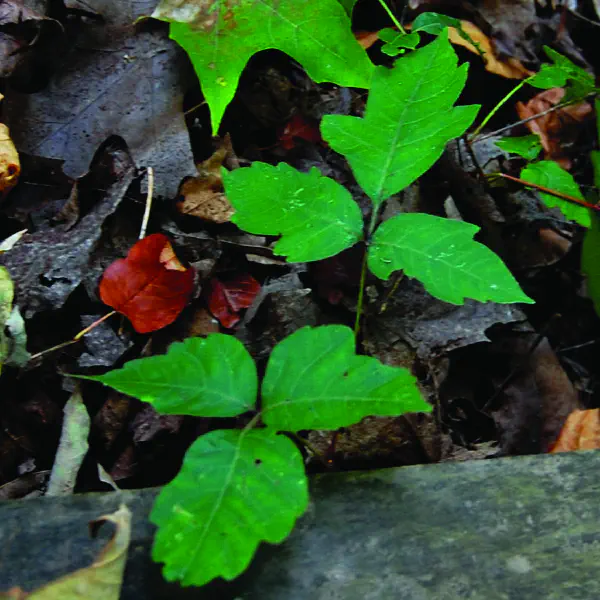Toxicodendron radicans
Table of Contents

Scientific Classification
| Kingdom: Plantae |
| Phylum: Tracheophyta |
| Class: Magnoliopsida |
| Order: Sapindales |
| Family: Anacardiaceae |
| Genus: Toxicodendron |
| Species: Toxicodendron radicans |
Conservation Status
Identifying Features
Poison ivy has a great diversity in its appearance. The saying “leaves of three, let it be” is common, but unreliable as the only way to identify this plant, as many other plants match this rhyme.
Additional identifying features to look for are alternate leaves and red colored leaves in the fall.
This plant may be trailing around the ground as ground cover, or climb in hairy vines. In some areas of the United States it may even take a shrub form.
Habitat & Range
Poison ivy is native to the United States, and has important ecological benefits. It prefers partial shade, and takes advantage of cleared areas such as hiking trailsides and park edges. In ideal conditions, it may crowd out other plants.
Life Cycle
This plant remains dormant in the winter, and is perennial. Its flowers are very small and are clustered. They bloom in May to June and are a white-yellow color.
Poison ivy produces white berries in the fall. While toxic to humans, this berry is eaten by over 80 species of wildlife and provides an important food source in cooler months.
CAUTION: Touching any part of the plant may cause severe skin irritation. The plant contains a chemical called urushiol, which when in contact with human skin may cause a rash and blistering.

